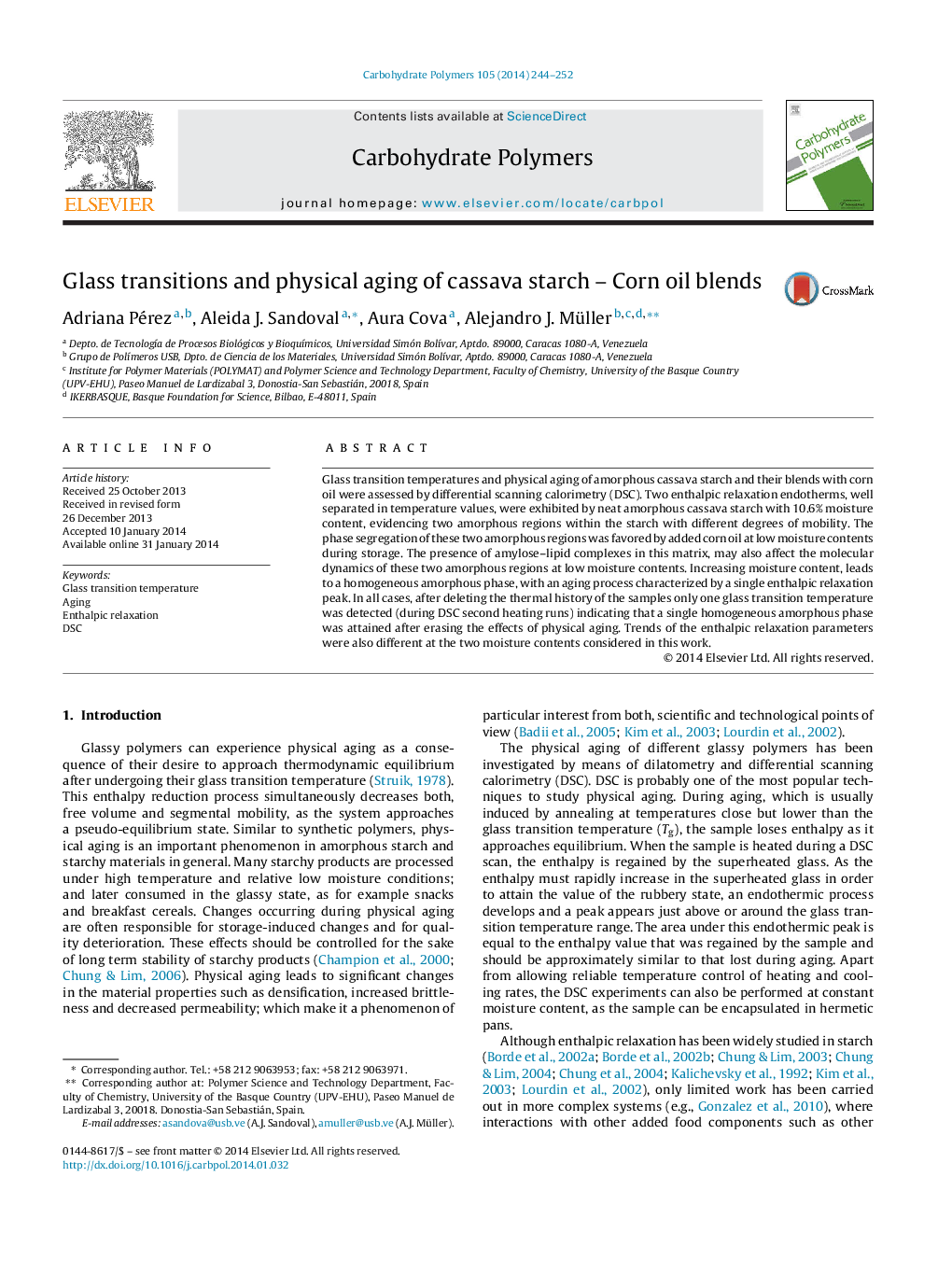| Article ID | Journal | Published Year | Pages | File Type |
|---|---|---|---|---|
| 1386058 | Carbohydrate Polymers | 2014 | 9 Pages |
•Neat cassava starch with 10.6% of moisture content exhibits two enthalpic relaxation peaks after physical ageing that reflect the presence of two amorphous phases.•Phase segregation within starchy matrix was favored by added corn oil.•Phase homogeneity was attained after erasing thermal history.
Glass transition temperatures and physical aging of amorphous cassava starch and their blends with corn oil were assessed by differential scanning calorimetry (DSC). Two enthalpic relaxation endotherms, well separated in temperature values, were exhibited by neat amorphous cassava starch with 10.6% moisture content, evidencing two amorphous regions within the starch with different degrees of mobility. The phase segregation of these two amorphous regions was favored by added corn oil at low moisture contents during storage. The presence of amylose–lipid complexes in this matrix, may also affect the molecular dynamics of these two amorphous regions at low moisture contents. Increasing moisture content, leads to a homogeneous amorphous phase, with an aging process characterized by a single enthalpic relaxation peak. In all cases, after deleting the thermal history of the samples only one glass transition temperature was detected (during DSC second heating runs) indicating that a single homogeneous amorphous phase was attained after erasing the effects of physical aging. Trends of the enthalpic relaxation parameters were also different at the two moisture contents considered in this work.
